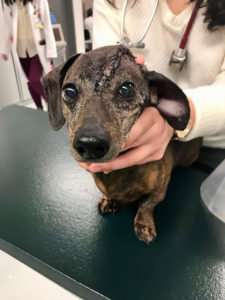Additive design signals revolution in reconstructive surgery
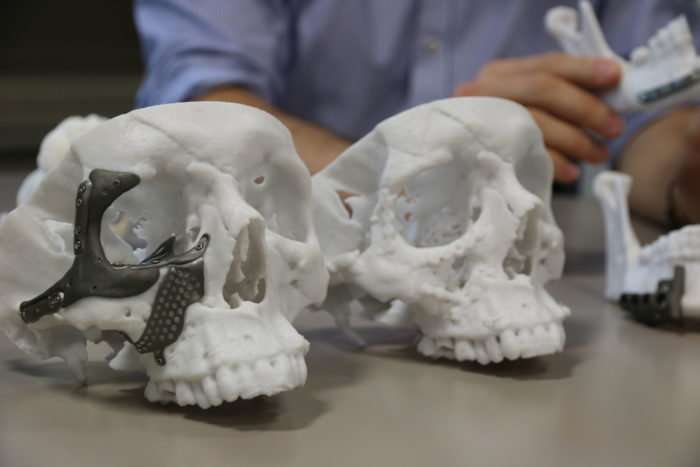
Revolutionary implants produced by a Western-based medical device company will soon change the face of reconstructive surgeries for more than just the family pet. Human patients may see the benefits of this technology as soon as early next year.
In March, Drs. Michelle Oblak of the Ontario Veterinary College and Galina Hayes of Cornell University removed a large cancerous tumour growing on the skull of an American dachshund named Patches. Oblak removed a portion of the 9-year-old dog's skull and replaced it with a 3-D-printed custom implant produced by ADEISS.
The Additive Design in Surgical Solutions – or ADEISS – Centre was formed last year as a partnership between the London Medical Network, British engineering firm Renishaw and Western. Located in Discovery Park, the development-and-commercialization centre focuses on the creation of medical instruments and surgical solutions via additive manufacturing – known as 3-D printing.
For Patches, ADEISS team members adapted software designed for human medicine to create a skull plate – that "fit in place like a puzzle piece" – to replace the part doctors planned to remove from the dog's head.
"It's a true international success story – a doctor from Guelph, performing surgery on an American dog at an American university with technology from London," said David Holdsworth, Scientific Director of ADEISS. "Patches has clearly captured the imagination of the public."
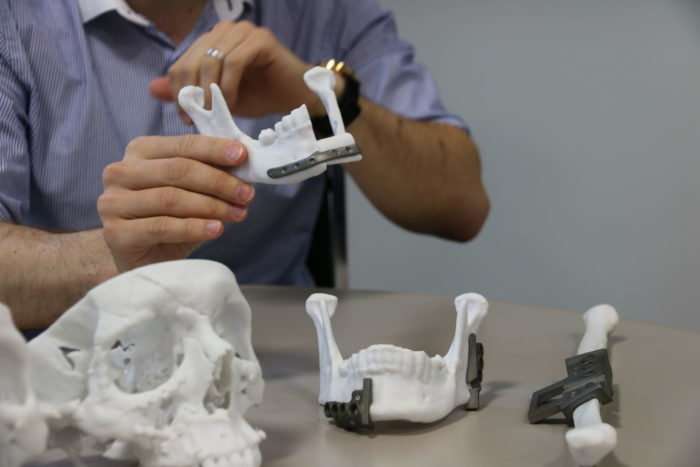
The story made national and international headlines this week, running in the New York Times, TIME, CNN, Boston Globe, NBC, Globe and Mail, CBC News, CTV News, Yahoo News and National Post.
ADEISS team members had been working with the Ontario Veterinary College for about six months constructing and perfecting implant solutions based on CT scans from old cases.
With the tumour growing fast, Patches' cap was completed in two weeks.
"When the Patches case came along, we were in a good place," explained Matt Parkes, ADEISS Technical Manager. "It was a great demonstration and proof of this technology in action. It can work; it can give a better result."
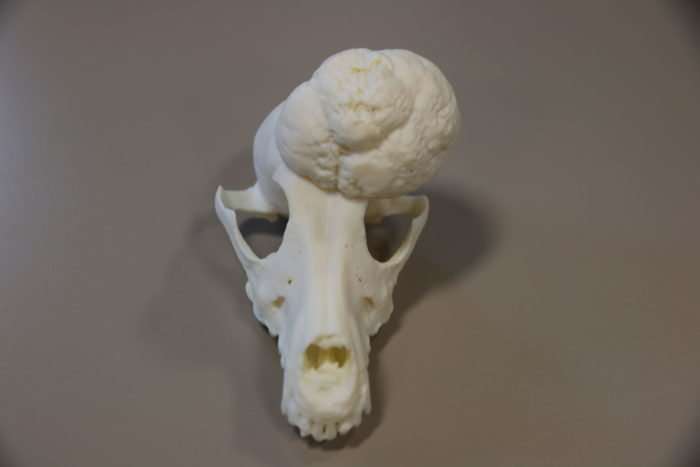
The success of the Patches procedure has opened the door for ADEISS to talk about its next step.
"The excitement around Patches' story has been wonderful," said Holdsworth, a Robarts scientist who also serves as Scientific Director of the Bone and Joint Institute at Western. "But our long-term goal is to see technology like this used to help humans in clinical applications."
And that reality may only be months away.
Over the last year, ADEISS has been working with regulatory bodies, like Health Canada and Food and Drug Administration (FDA) in the United States, on an audit of the company's processes and facility. That certification – known as ISO 13485 – is essential for products and devices to be approved for use within the human body.
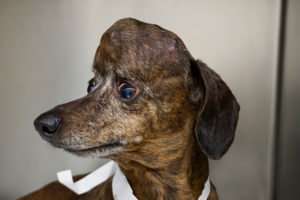
The certification could come by the end of the year.
That will be a "game-changing" moment for patients and the young company.
Typically, surgeries of this kind take a long time. Once a portion of skull is removed, surgeons must assess the damage and shape titanium mesh over the spot.
"There is an art to it, by the surgeon. They do a good job. But the result is never as accurate as it could be," Parkes said. "That can be bad for the patient and expensive for the hospital. But by having something perfectly fit, just imagine if you had that during surgery, there is a positive feel to it."
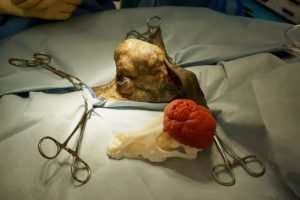
This new technology eliminates the need to model an implant in the operating room, reduces patient risk by shortening the time spent under anesthesia and shortens post-operation recovery time by having a precise fit.
"It can also be very important to a patient in terms of psychological recovery from something like cancer or trauma where they get a reconstruction that matches what they are expecting to see," Parkes said. "Something like your face and your appearance is so vital to a patient's identity – it is vital we get a good aesthetic result. And that is where this custom technology really shines."
ADEISS collaborates with numerous researchers within the Bone and Joint Institute at Western and Robarts Research Institute, as well as with clinicians at University Hospital, to develop this technique, as well as design completely novel implants.
To date, implant procedures like these have been conducted in Europe.
In Canada, a handful of treatments are available, but all materials must be purchased from American firms, skyrocketing the costs for the health-care system.
In terms of innovation, Canadian researchers can only get their idea to market if they license it to a U.S.-based company. That is not ideal for anyone involved, Holdsworth said.
"This is all about reducing the barriers for our researchers," he continued, explaining that the possibility of producing these implants in Canada – as well as creating new models – is an exciting prospect for all involved.
"It is important we keep the value of our ideas in London, in Ontario, in Canada. We hope by having this capability here, we can keep more of those ideas at home," Parkes said.
